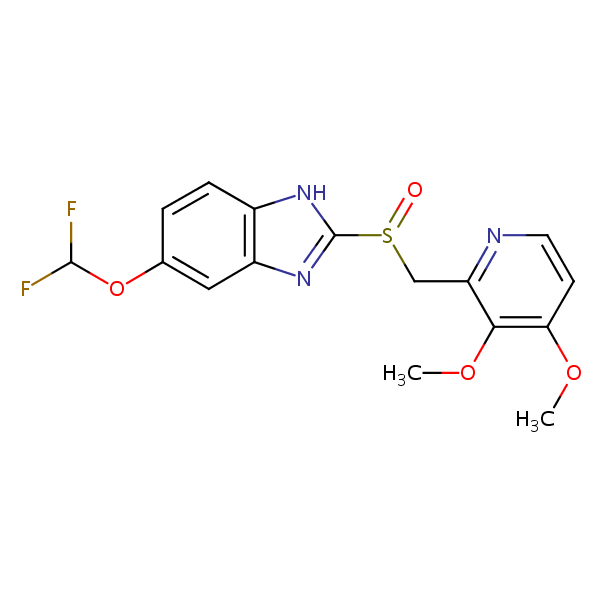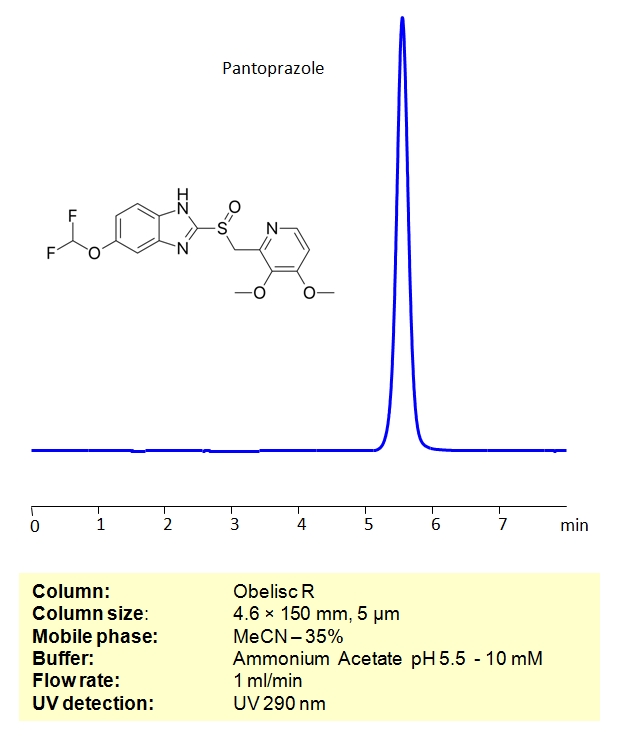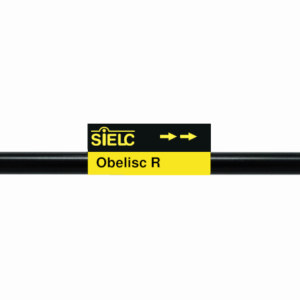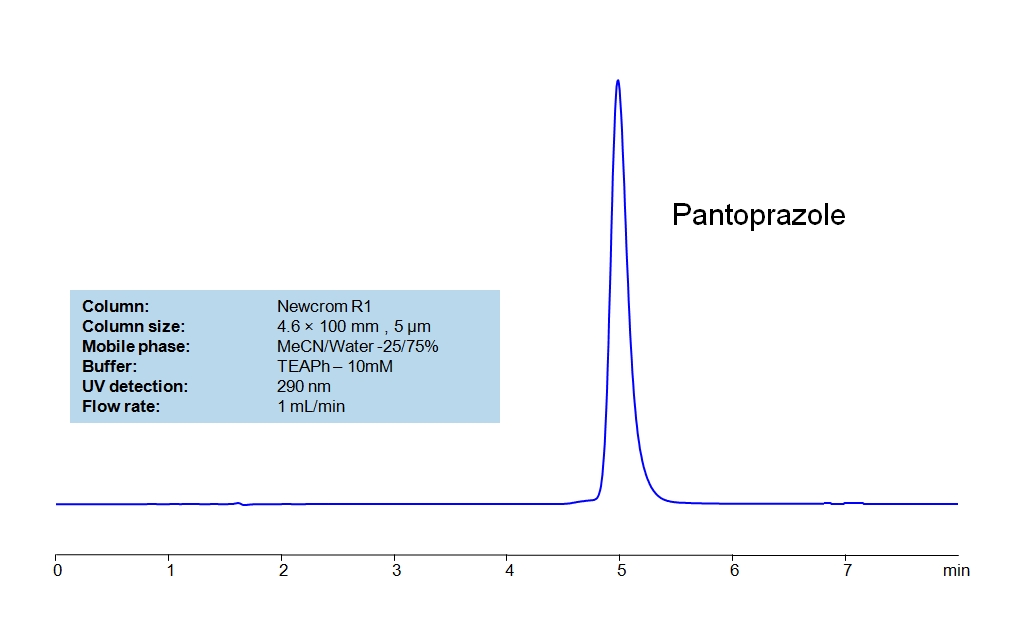| CAS Number | 102625-70-7 |
|---|---|
| Molecular Formula | C16H15F2N3O4S |
| Molecular Weight | 383.370 |
| InChI Key | IQPSEEYGBUAQFF-UHFFFAOYSA-N |
| LogP | 1.56 |
| Synonyms |
|
Applications:
Determination Pantoprazole on Obelisc R Column
February 11, 2021
HPLC Method for Pantoprazole, Pantoprazole sodium on Obelisc R by SIELC Technologies
High Performance Liquid Chromatography (HPLC) Method for Analysis of Pantoprazole, Pantoprazole sodium.
Pantoprazole is a proton pump inhibitor (PPI) with C16H15F2N3O4S molecular formula. It is used to decrease stomach acids amounts. It does that through binding to proton pumps in the stomach’s lining, therefore preventing the production of stomach acid.
Pantoprazole, Pantoprazole sodium can be retained on an Obelisc R column, which has both positive and negative ion-pairs embedded in the stationary phase, allowing for the fine tuning and separation of a wide range of compounds with different ionic properties. Pantoprazole can be determined isocratically using a simple MS-compatible mobile phase of acetonitrile (ACN) and water with Ammonium Acetate (AmAc) buffer and detected by UV at 290nm, ELSD, CAD or LC/MS.
| Column | Obelisc R, 4.6 x 150 mm, 5 µm, 100 A, dual ended |
| Mobile Phase | MeCN -35% |
| Buffer | Ammonium Acetate pH 5.5 – 10 mM |
| Flow Rate | 1.0 ml/min |
| Detection | UV 290 nm |
| Class of Compounds |
Drug |
| Analyzing Compounds | Pantoprazole, Pantoprazole sodium |
Application Column
Obelisc R
Column Diameter: 4.6 mm
Column Length: 150 mm
Particle Size: 5 µm
Pore Size: 100 A
Column options: dual ended
Pantoprazole sodium

HPLC Method for Analysis of Pantoprazole Sodium in Tablets on Newcrom R1
June 8, 2018
HPLC Method for Pantoprazole, Pantoprazole sodium on Newcrom R1 by SIELC Technologies
High Performance Liquid Chromatography (HPLC) Method for Analysis of Pantoprazole, Pantoprazole sodium
Pantoprazole is a proton pump inhibitor (PPI) with C16H15F2N3O4S molecular formula. It is used to decrease stomach acids amounts. It does that through binding to proton pumps in the stomach’s lining, therefore preventing the production of stomach acid.
Pantoprazole, Pantoprazole sodium can be retained and analyzed using the Newcrom R1 stationary phase column. The analysis utilizes an isocratic method with a simple mobile phase consisting of water and acetonitrile (MeCN) with a Triethanolamine buffer. Detection is performed using UV.
| Column | Newcrom R1, 4.6 x 100 mm, 5 µm, 100 A, dual ended |
| Mobile Phase | MeCN/H2O – 25/75% |
| Buffer | TEAPh – 10 mM |
| Flow Rate | 1.0ml/min |
| Detection | UV, 290 nm |
| Class of Compounds | Drug, Proton-pump inhibitor, Hydrophobic, Neutral |
| Analyzing Compounds | Pantoprazole, Pantoprazole sodium |
Application Column
Newcrom R1
Column Diameter: 4.6 mm
Column Length: 100 mm
Particle Size: 5 µm
Pore Size: 100 A
Column options: dual ended
Pantoprazole sodium






